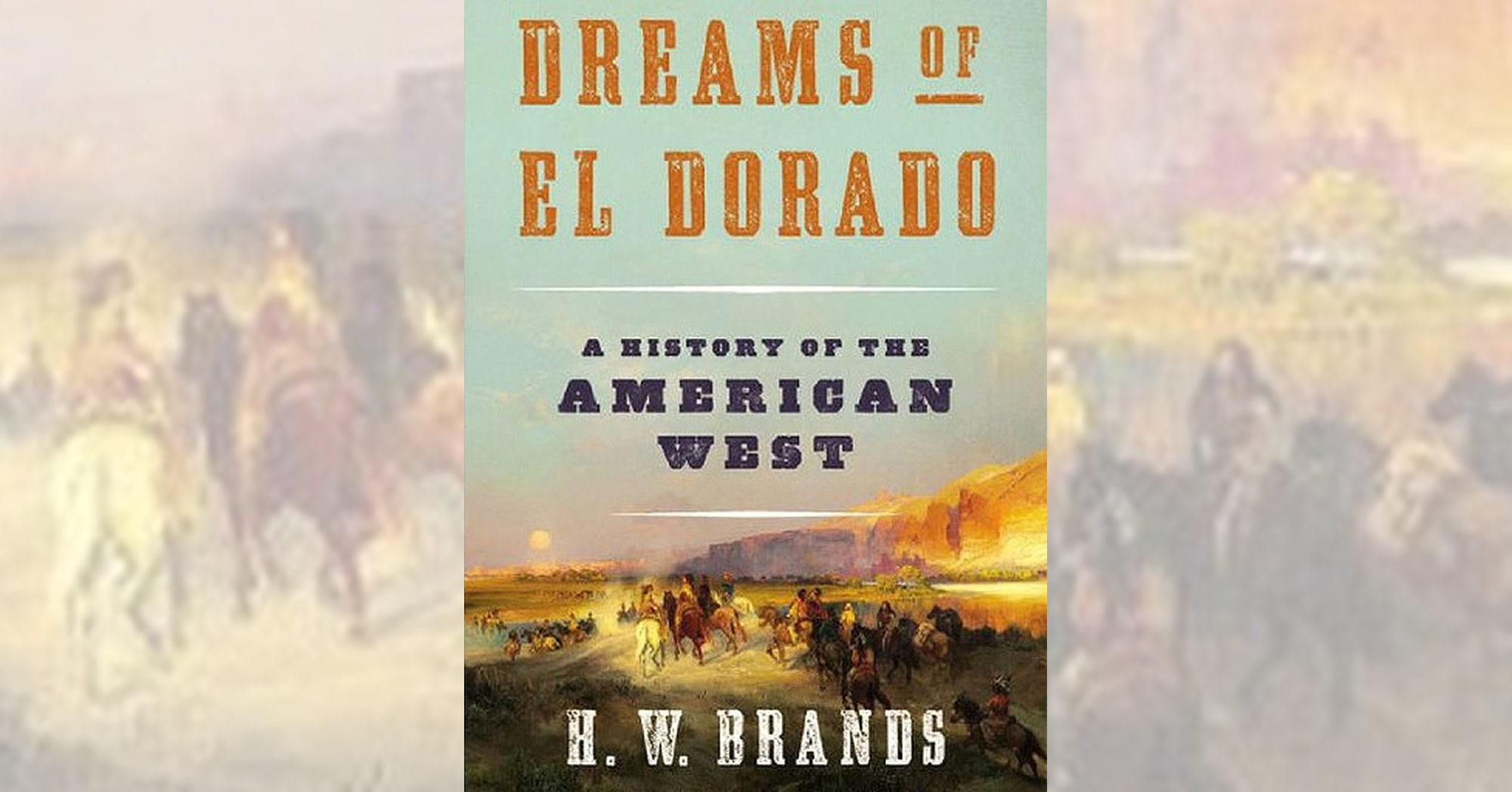Dreams of El Dorado: A History of the American West, by H.W. Brands, Basic Books, New York, N.Y., 2019, $32
More than one writer has likened life to train travel, an understanding of the journey largely dependent on when a person embarks and—ahem—debarks. History allows us the luxury of hindsight, if we remain curious and refrain from the contemporary rush to reframe it to suit our present sensibilities. Omit the sometimes impolitic events of the 19th century from a study of the American West, for example, and its history—how we arrived here from there—would be incomprehensible. Place that very American century under a microscope, however, dissect it unflinchingly, and you’ll have a decent grasp on what makes the region and its people tick, its strengths and weaknesses, its unique character, its peculiar contradictions and how it transformed from untamed frontier into a largely homogenous part of the American whole.
“Any work of history must have a beginning and an end,” H.W. Brands writes in the prologue to Dreams of El Dorado. “This one commences with the Louisiana Purchase at the start of the 19th century, when the United States first gained a foothold—a very large one—beyond the Mississippi.” That 1803 transaction between then aspiring French Emperor Napoléon and third U.S. President Thomas Jefferson gained the latter an 828,000-square-mile foothold, to be exact, and for the bargain-basement price of $15 million, or $18 per square mile. Just what Jefferson had bought and whether it would prove a bargain remained to be seen. Thus Brands steps off into the interior with Lewis and Clark’s Corps of Discovery to explore “Napoléon’s Gift,” the first of eight broad sections on which he drapes his history of the American West.
Brands, a chaired history professor at the University of Texas at Austin, knows his topic well, having authored more than 30 histories of the United States, including well-received biographies of Andrew Jackson and Theodore Roosevelt and regional studies of the Texas Revolution and California Gold Rush. Those westward-gazing presidents feature here, while each of the latter events merits its own section (“Gone to Texas” and “The World in a Nugget of Gold,” respectively). Other sections examine the fur trade, emigrant and cattle trails, Western explorers, the railroads, Indian wars, land rushes and the rush to mythologize the passing frontier in song and print and on canvas and film. Though Brands keeps largely to well-trod ground, this is no formulaic textbook. The two-time Pulitzer Prize finalist is a gifted storyteller.
Alas, all good histories must come to an end. “Inevitably, the blank spot was filled in,” Brands writes of the “closing of the frontier” announced in the 1890 U.S. census and famously reaffirmed by historian Frederick Jackson Turner. “As the West passed from dream to reality, it became more like the East, until nothing significant distinguished the one from the other,” he concludes. “Yet a residue remained.” Sounding its echoes, Brands argues, were Silicon Valley venture capitalists, Hollywood filmmakers and 20th-century dude ranches. But those are topics for his yet-to-be-written history of the New West—a train still rolling down the tracks.
—Dave Lauterborn
This post contains affiliate links. If you buy something through our site, we might earn a commission.





